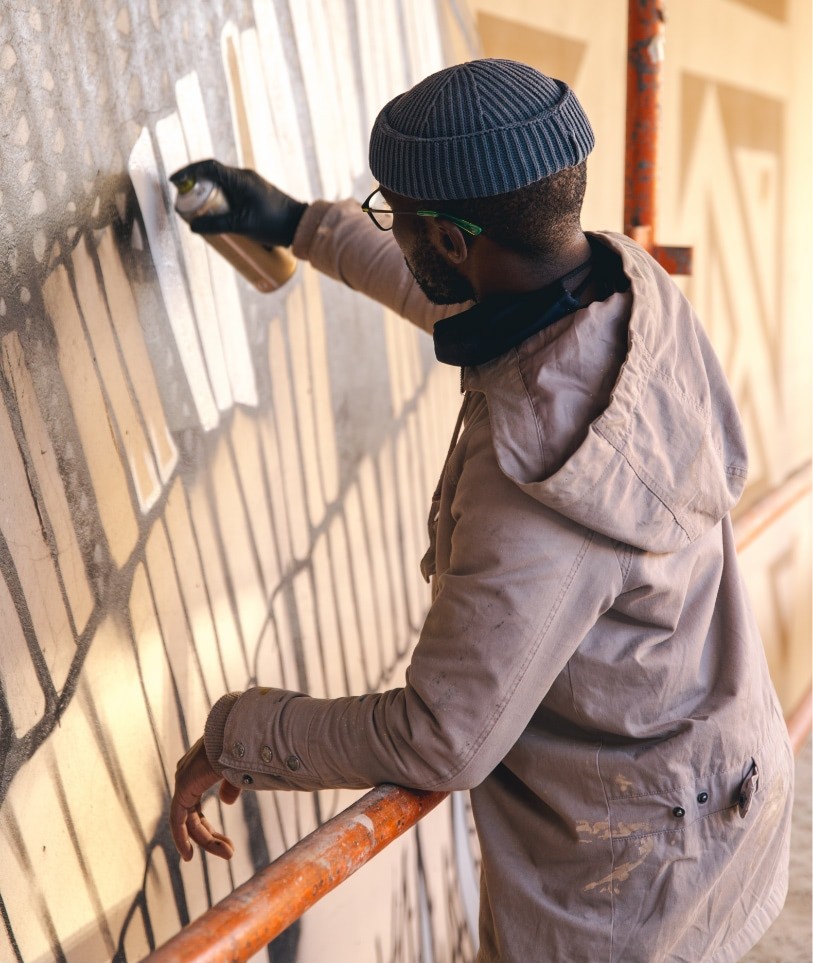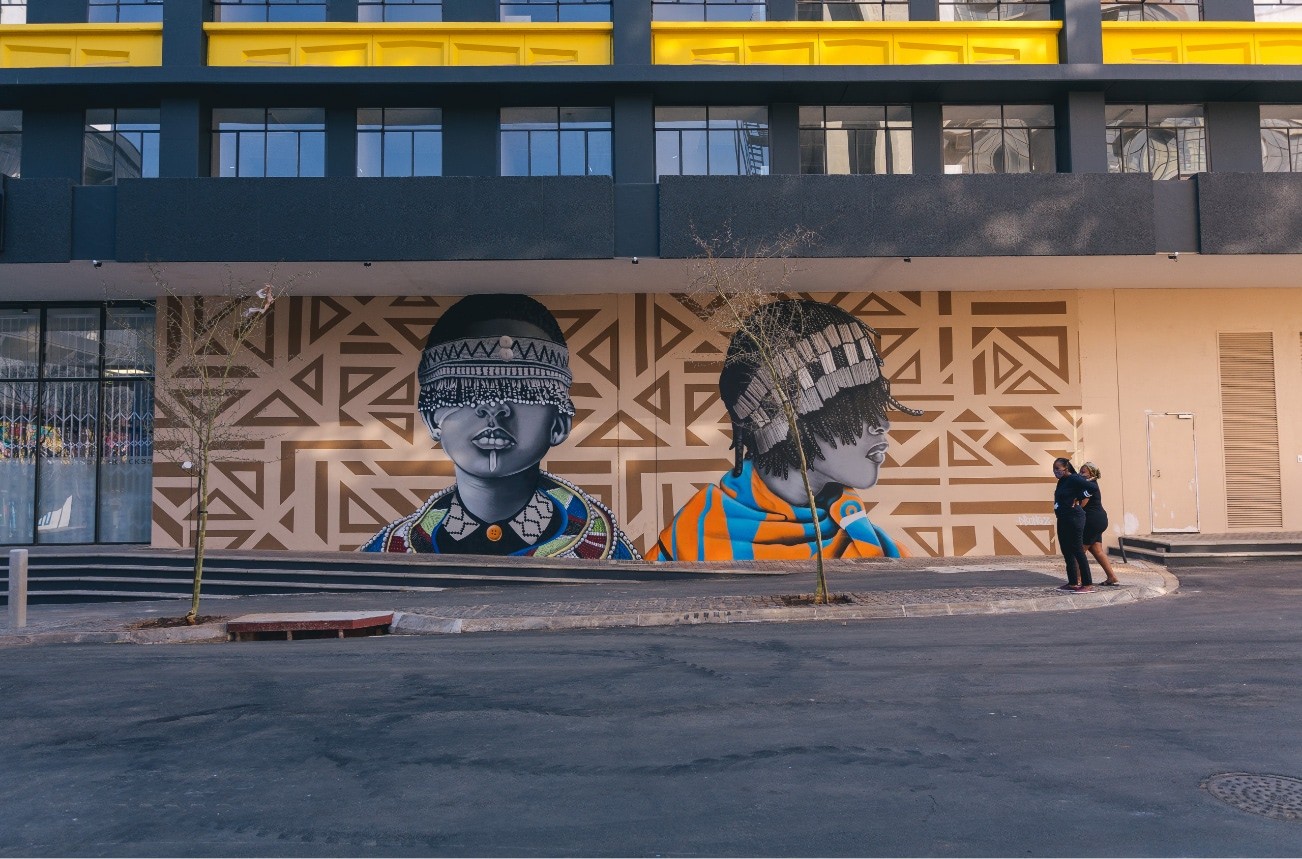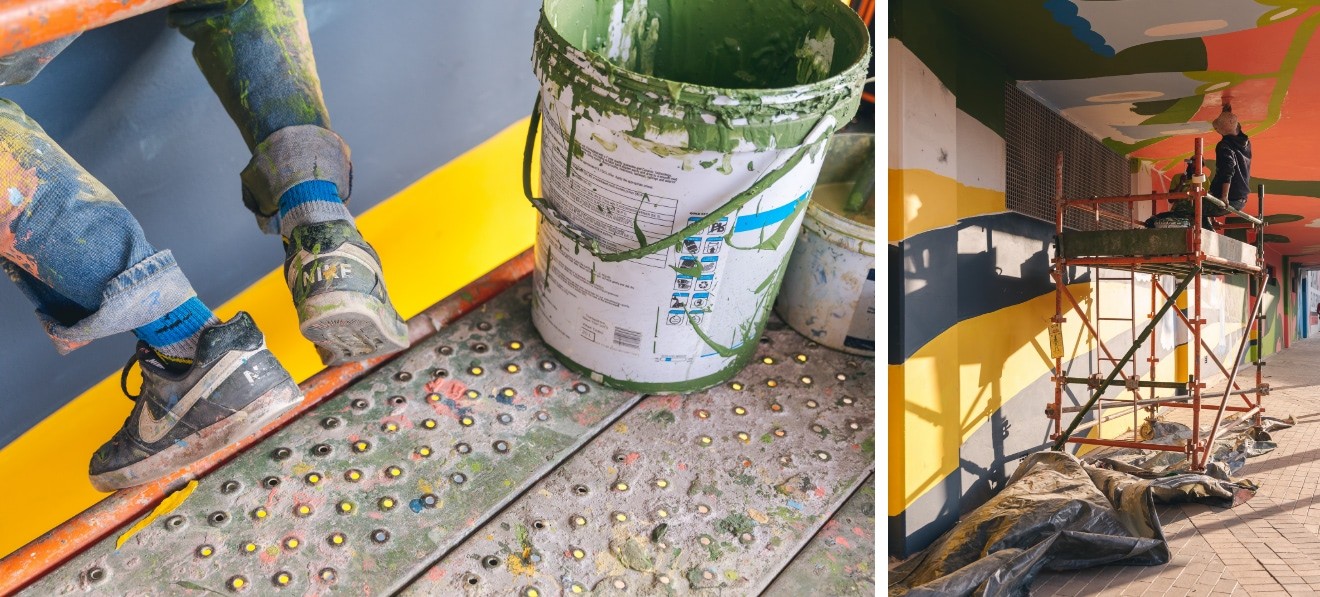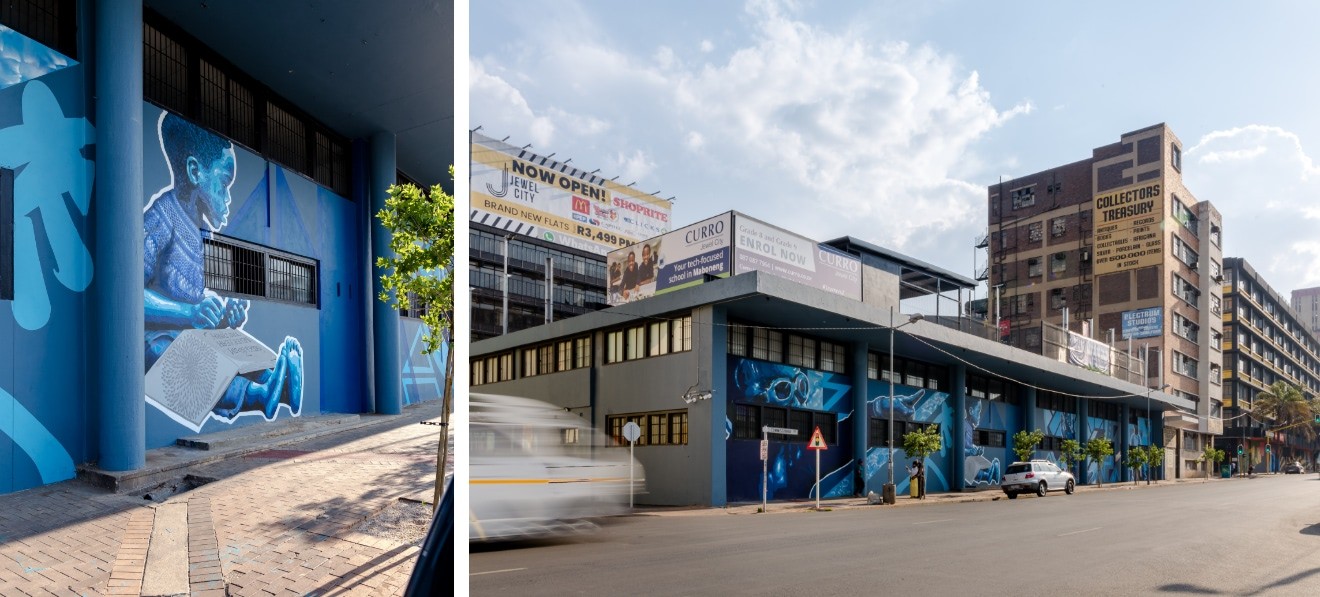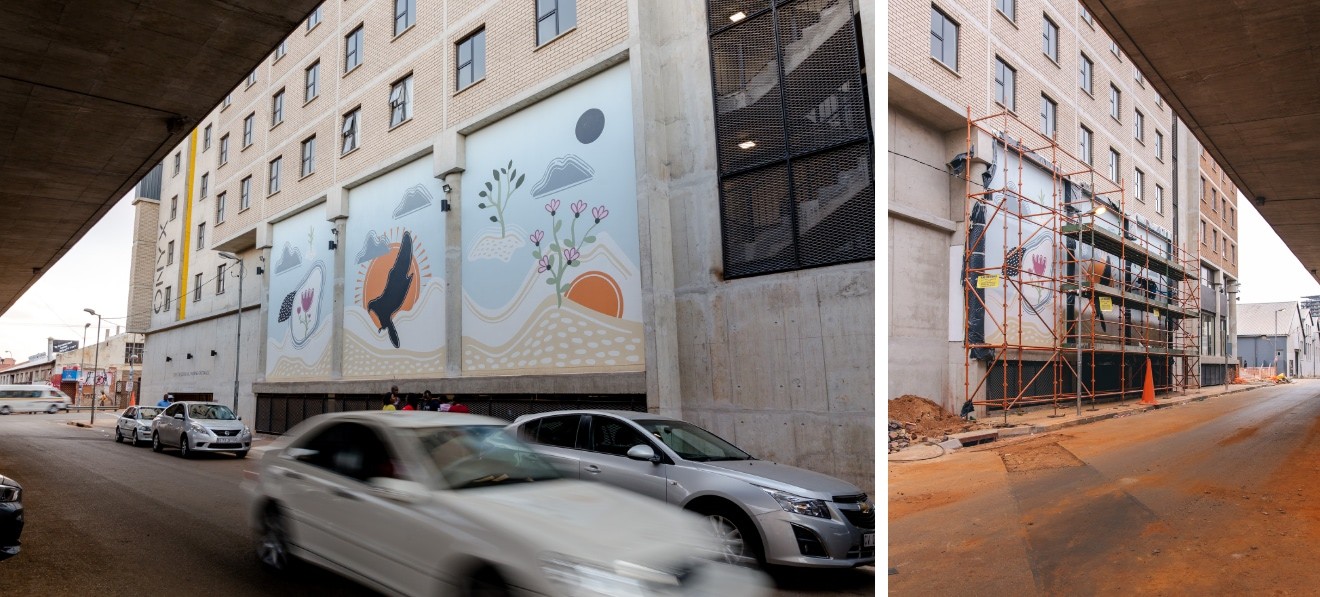Our tool for managing your permission to our use of cookies is temporarily offline. Therefore some functionality is missing.
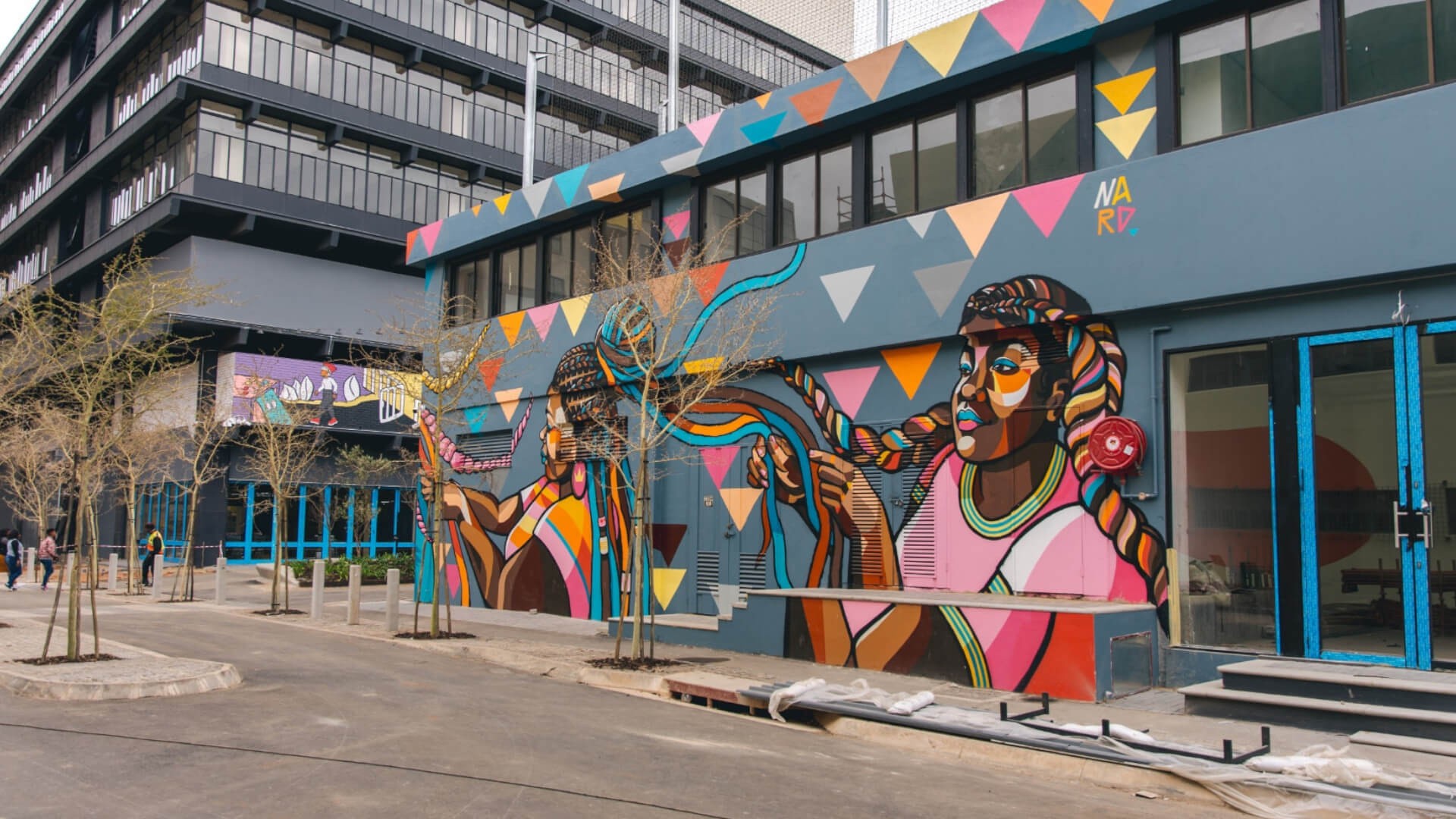
INNER CITY GEM.
Creative Club spoke to Liesl Potgieter of PLNTH, the curatorial force behind the dazzling murals in and around Jewel City, one of Joburg’s new nodes of urban redevelopment.
A gem in the city of gold
A few years ago, nothing but high walls and closed gates would have greeted you if you’d driven past the six city blocks in Joburg’s eastern CBD where you now find Jewel City. On the outskirts of the Maboneng Precinct, the area around Fox and Commissioner Streets that now houses the development was entirely walled off in the ’90s to create an ultra-secure compound. It was from here that the city’s diamond, gem and precious metals traders operated, hence the name Jewel City. Back then, it was as if this little island in the city did not exist to outsiders.
The once-impenetrable fortress was reopened as Jewel City in 2020, and last year won an award for excellence for its deft architectural reinvention of the cluster of industrial buildings, some dating back to the 1930s. Now it’s a vibrant mixed-use precinct with flats, shops and restaurants, a school, sports facilities (including rooftop seven-a-side soccer), offices and more.
It was envisioned as a more affordable and diverse complement to Maboneng’s pioneering vision of urban revitalisation. Designed to address much-needed access to resources and economic opportunities, as well as the need for decent inner-city housing, the development has ushered in a new phase of the city’s evolution.
The streets running through the precinct have been opened up to the rest of the city again, plugging it back into the currents of urban activity. Traffic-free, the thoroughfares throughout the complex are wide and walkable. The public realm — with its wide courtyards and open piazzas with grass, trees and fountains — is full of activity, and the sidewalks around the precinct have also been upgraded and are lit up at night.
THIS IS NO GRAFFITI; IT’S A CAREFULLY COMMISSIONED AND CURATED SELECTION OF WORKS CONCEPTUALISED SPECIFICALLY FOR THE PRECINCT.
Massive murals
This is the ‘almost invisible’ work of a team of architects, urban designers and developers. Almost invisible because what strikes you immediately as you walk around or drive past the precinct are the artworks. Giant murals cover the sides of buildings − some even wrapping around corners − transforming what might otherwise have been nondescript buildings into vibrant and engaging urban icons.
Throughout history, architects and politicians have harnessed the power of art to create an identity for public spaces and give them significance, but Jewel City isn’t necessarily the right kind of space for civic sculptures.
Liesl Potgieter, owner and director of PLNTH knew that murals were the perfect choice for Jewel City. They’re a wonderfully effective way to transform otherwise bland industrial buildings without interfering with their heritage or the original architecture.
Off the wall: curating, art and empowerment
Facilitating art interventions on this scale is Liesl’s speciality. She describes what she does as project managing “specialist art productions” and she’s overseen projects in Braamfontein, The Bank in Rosebank, Loftus Park, and as far afield as Rustenburg Mall.
For Jewel City, she helped select the artists, conceptualised the brief and liaised between artists and developers. The idea, she explains, was to commission works that felt connected to Joburg in some way.
Liesl deliberately chose to work with a mix of well-known and unknown artists. Her experience of working with a wide range of players, from designers who can convert an artwork into instructions for painters, to the teams who execute the installation on behalf of artists, ensured the success of the project.
She had the freedom to cast her net wide and create some exciting and unexpected new possibilities, while also keeping a practical eye out for “artists who could do a very graphic illustration that could be interpreted by site painters”.
“The experienced artists are important to include because they create beautiful work and there is valuable recognition from the public,” Liesl says.
“I had a huge interest in getting young women as part of the project,” she adds. In her quest for “young illustrators who were on the cusp of being quite big, but hadn’t yet produced a mural”, she approached creators who were primarily illustrators or graphic artists, like Balekane Legoabe, Zhi Zulu, Sonwabo Valashiya and Kgabo ‘Saint Rose’ Mametja. The project gave them a new platform through which to express themselves.
So, not only did the exercise transform the city, but it also shifted the possibilities among local designers and artists. “I think it’s amazing to have their voices presented in a much more public way so that other people can see [their work], not just those on Instagram or those who already follow them,” Liesl says.
“My interest in an urban space is [partly] the excitement of reaching a public that is … much wider than an ‘art audience’,” she adds. The potential for “engaging with a public that is not an art public” is one of the massive advantages of urban art. It’s art that has broken out of the gallery.
This is a timely intervention in a world where local graphic art is also on the verge of a significant renaissance as a new aesthetic and approach to design is being established. The crossover between architecture and urban life makes for a heady combination!
